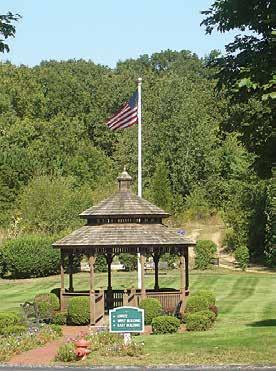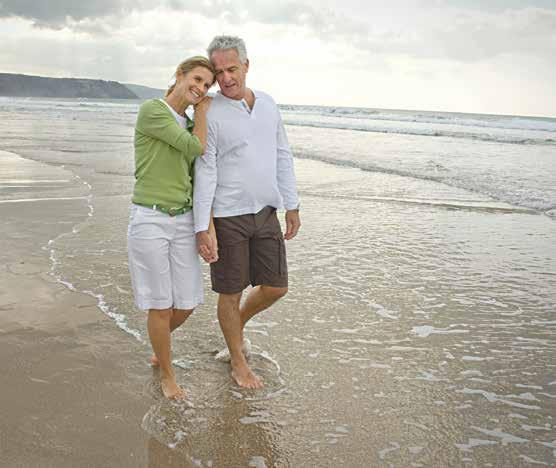









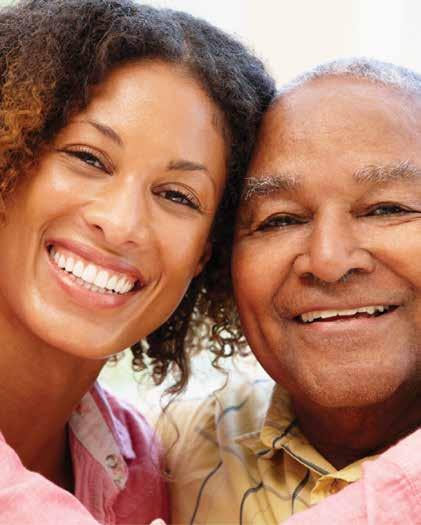
To order a print copy of the AARP Massachusetts Family Caregiver Resource Guide, call the AARP Family Caregiving Resource Line at 1-877-333-5885 and request the Family Caregiver Resource Guide. Or, order the guide online at aarp.org/caregiverresources.
This fall, AARP Massachusetts hosts two event series focused on Fraud Awareness and Financial Resilience. The first event series is a continua tion of our Fraud Talk Tuesday webi nars and occurs on the second Tuesday of ev ery month from 12 – 12:30 p.m.

Scammers are always coming up with new ways to take your money. From romance scams to Medi care fraud and everything in between, it can be tough to stay up to date on the latest ploys. During our Fraud Talk Tuesdays, we break down a different scam each month, provide informa tion on how to protect yourself, and answer your questions. All in 30 min utes or less! The next one is on Octo ber 11 and will be covering Medicare Scams and Medicare Identity Theft. These schemes succeed by manipulat ing Medicare members or stealing and misusing their private information.
Mike FestaCases of medical ID theft reported to the Federal Trade Commission (FTC) rose from about 6,800 in 2017 to near ly 43,000 in 2021. To learn more about the October 11 event, register at tinyurl. com/2p99pjm4. And to learn more about the Fraud Talk Tuesday event series, visit tinyurl.com/393adz82.
In addition to Fraud Awareness, AARP Massachusetts wants to make sure you are staying vigilant and fi nancially resilient this fall by pre senting you with a webinar series on Financial Resilience. Webinar topics include Making Every Cent Count, So cial Security, Planning for Retirement, Making Cents of Caregiving, and Avoiding Scams. Here’s a list:
Do you understand how Social Se curity works? Have you wondered what the difference between full, early, and delayed benefits are?
This workshop focuses on build ing an understanding of the impli cations of Social Security claiming decisions. You will discover what Social Security is and you will also learn how to secure your benefits.
Build confidence in making a deci sion that is right for you! Thursday, October 6, 6-7:30 p.m. ET Register
at tinyurl.com/3fmys9ms. Wednes day, October 19, 6-7:30 p.m. ET Reg ister at tinyurl.com/2p8bj5rs.
• Making Every Cent Count: Everyday Habits to be Financially Resilient
Join us for a conversation about how our everyday habits can shape how financially resilient we are and how we can adopt good habits. Hear about daily ways to save, debt man agement and budgeting. Learn about handy AARP online tools. Wednes day, October 12 from 12-1 p.m ET. Register at tinyurl.com/2p93k6vv.
• Retirement Planning: Strategies for Today and Tomorrow Retirement planning doesn’t have to be daunting. It’s never too early or too late to take charge of your financial future. If you’re anxious about retirement, you can still build your stash — with the right moves. Learn tips for determining if you are on track and learn practical strate gies to help you achieve retirement peace of mind. Thursday, October 13, 6-7 p.m. Register at tinyurl.com/ 3jw5azjv.
In this informative and education al session, you will be introduced to essential information caregivers need to more easily manage some of the complexities of caregiving. Using the AARP Financial Work book for Family Caregivers, you will learn how to incorporate financial tips into your caregiving. We hope you gain a better understanding of how to plan for your care recip ient and develop the confidence to do so! Thursday October 20, 2022 from 12-1 p.m. Register at tinyurl. com/2sppcvch.
Keep an eye out for more events from AARP Massachusetts this fall. But don’t miss an opportunity to learn more and tell a friend.
Mike Festa is the State Director for AARP Massachusetts. For more articles visit www.fiftyplusadvocate.com.

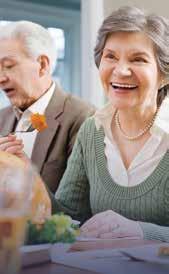
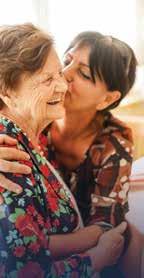
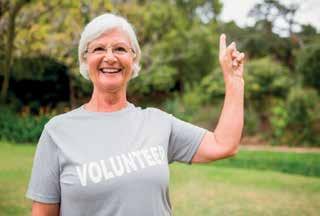
REGION - Massachusetts, in part be cause of its long-standing history, has long been a bastion of significant and important museums. But there are also some lesser-known ones that are quite unusual.
Unfortunately, at least partially due to the COVID-19 pandemic, the list of candidates has dwindled.
Favorites such as the Museum of Bad Art (MOBA) in Somerville, where the long-standing slogan was “Art too bad to be ignored” have closed. It be gan displaying its dauntless spirit more than three decades ago with the first of its 700 pieces―acquired from a trash can.
It’s farewell also, at least tempo rarily, to outstanding candidates such as the retired Dr. John Collins Warren’s lifelong collection of 15,000 items. They included fetal skeletons and pickled or gans at the Francis A. Countway Library of Medicine in Boston. “Not for the faint of heart,” one visitor said of the ghoul ish collection.
And still another candidate was “washed out,” you might say. The American Sanitary Plumbing Museum,
conveniently located in Watertown and often called the Toilet Museum, was flushed away with the announcement it was “temporarily closed.” The same fate has befallen the Telephone Muse um in Waltham.


But here’s a selection of existing museums where you can still get your fix of the arcane and unusual.
Boston’s West End is best known for its immigrants. It was a melting pot
of Greeks, Jews, Lithuanians, Poles and others. You find all of them and more at the West End Museum, entry on 150 Staniford Street, Lomasney Way Suite 7, in Boston. The often-neglected neighborhood museum has been around since 2004. Local leaders dedicated it as an educational institution for the ar ea’s culture. Admission is free.
Veterans and others might want to
salute the Museum of the Ancient and Honorable Artillery Company of Mas sachusetts on the fourth floor of Faneuil Hall in Boston. It is said to be the oldest chartered patriotic service organization preserving the city’s historic and patri otic traditions. Historically, members of this company have served in every Mas sachusetts colonial war and national conflict since its founding in 1638. Items span all conflicts from the Revolution to the battlefields of Desert Storm. Admis sion is free.
For a unique experience, consider a visit to the Middleborough Histori Museums






- While New York Times bestselling author Elizabeth Berg has published almost forty books, she ad mits to having a personal affection for one of her characters, Arthur Truluv, aka Arthur Moses. A prequel to the Arthur Truluv series will be coming out in March and focuses on his life as a teenager.

While living in Minnesota in the early years of her marriage, Elizabeth felt a pull to Massachusetts. She had always felt it to be the prettiest place to live. Her husband got a job in Bos ton, and she resided in the Bay State for twenty years. She called Boston, Newton, Natick and Southborough her home for that period and loved the beauty that surrounded her. Her older daughter still lives here.
While in Massachusetts, she was a recipient of the “Literary Light” award from the Associates of the Boston Public Library. This award was anointed in 1996 and its purpose is to “keep the fire and art of writing alive.”
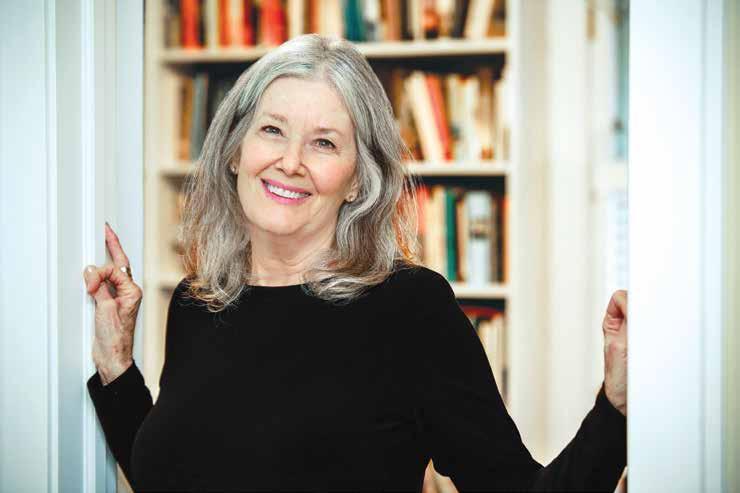
“In 1997, I was given an award by the New England Booksellers Associ ation for fiction, nonfiction, children’s and editorial excellence for three of my
published works: ‘Joy School,’ ‘Pull of the Moon’ and ‘Range of Motion.’ It’s always an honor to be recognized for your work,” said Berg.
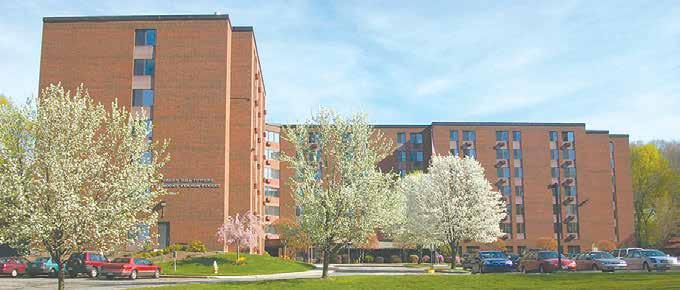
Although Berg does a lot of public speaking, she describes herself as an inherently shy lover of nature, dogs, and the domestic side of life.
New novel being released next spring
While Berg is currently working on a new novel, she is not ready to divulge
anything about it yet. She is very excit ed for her next book that is coming out in March 2023.
“The impetus from my editor for this book was that she wanted me to write about how that character got to be the way he was,” she explained. “I don’t usually like to take suggestions about what to write but I have a partic ular affection for Arthur Truluv, too, so I thought that it would be interesting to see how he came to be such a kind and compassionate young man.
It’s called, ‘Earth’s the Right Place for Love,’ after the Robert Frost poem,” she noted. “The cover is just beautiful and speaks to what this book is about. I’m really proud of it.”
After completing that novel, Berg missed the feeling of the book’s mes sage and went on to write two more. The new one will be the sixth in that series and takes place in the imaginary town of Mason, Missouri.
When asked about her writing process, she admitted to allowing things to unfold quite organically. She doesn’t go into a new project with any preconceptions about what the char acters do and her process, in general, is highly intuitive. She thinks her readers would be surprised to learn that she does not plot.
Although Berg does a lot of public speaking, she describes herself as in herently shy and loves nature. She is a
dog lover and truly enjoys the domestic side of life, including cooking, quilting and looking at houses (“I should actu ally be a realtor,” she added). She is an avid reader and describes her night stand as a base for volumes of poetry books and novels to reside on.
“I always have eight to ten vol umes of poetry on my nightstand, and I am currently reading ‘The Tender Bar’ by J. R. Moehringer. I have Anne Fadi man’s latest collection of essays with spillover in my bookcase of what I want to read next. I’m like an adolescent boy who keeps dropping a girl when a pret tier one comes along,” she joked.
Having had a career as a nurse for ten years, Berg got a lot of encourage ment to write, something she had al ways done. When her daughters Julie and Jenny were ages four and nine, she entered a contest through Parents Mag azine. She submitted an essay about taking the plunge to leave work and stay home with your children, some thing she wanted to do. She won and was encouraged to continue her craft.
“I guess I always thought to be a writer, you had to be a man and have a jacket that had elbow patches and you had to smoke a pipe. It just didn’t occur to me, that I, too, could do that for a liv ing,” said Berg.
She had always wanted to meet two favorite authors, Anne Tyler and Alice Munro. She did actually meet Anne Tyler and express her admiration. “She was so grounded and charming. Meeting her was a dream come true,” said Berg.
In her free time, Berg enjoys spend ing time with family and friends. She loves walking in nature and around her town of Oak Park, Illinois to see what the citizenry is up to. “This is when you get to meet an interesting person, hear
a snatch of conversation or see ordi nary things that do not seem ordinary,” she explained.
Berg loves poetry and has a special affection for poet Dorianne Laux, who conveys that any good poem is asking you to slow down.
“It behooves all of us to take a mo ment and crystallize it. These seeming ly simple lines on the page are so much more. Art is not what you see but what you make others see, a quote I am bor rowing. I love that quote,” said Berg.
cal Museum, also known as the Tom Thumb Museum, at 18 Jackson St. in Middleborough. It includes seven buildings housing artifacts related to the New England town. P.T. Barnum came to Middleborough in 1863 to re cruit dwarf performer Tom Thumb’s wife Lavinia, who was then living here. The museum today features the largest collection of Tom Thumb (aka Charles Stratton) memorabilia in the U.S. The couple on a world tour eventually made 1,471 performances which included many admirers, such as Queen Victoria.
There aren’t many museums where
you can stay the night, but this one fits the bill as it’s both a bed-and-break fast and a museum. The former home of Lizzie Borden in Fall River is the site of the 1892 double murder of Andrew and Abby Borden, victims of a hatchet attack. Lizzie was tried and acquitted of her involvement in the deaths of her fa ther and stepmother but lived with the accusation the rest of her life. Located at 230 Second St., the home’s original hardware and doors are intact, and the 19th-century decor has been “painstak ingly” replicated. Artifacts linked to the case are also on display. Various ghostly doings are associated with it. The most requested room is where Abby Borden was found murdered.
Publisher/Sales
Advertising Sales:
Mary Ellen Cyganiewicz:
Clifford:
Serving




BOSTON - Sure sounds like a movie: Starting out, an enslaved couple, Lewis and Harriet Hayden escape from Ken tucky. They turn their Boston home into one of the U.S.’s best-known “safe houses” for runaway enslaved people. But the story does not end there. In a surprising plot development, Lewis Hayden becomes a legislator, recruiting soldiers that included the Civil War’s all-Black 54th Regiment.

That all really happened with one genuine Hollywood twist: The historic 54th Regiment’s story later became a popular and fact-based movie, “Glory.” The Hayden home was a prominent part of the Underground Railroad, the secret network of people and build ings that harbored runaways from the South. It and the memorial dedicated to the 54th are both stops along Bos ton’s Black Heritage Trail, which can be self-guided or led by a National Park Ranger guide. Many visitors prefer the
latter.
“They get more details of the his tory of the area before, during and after the American Civil War,” said Shawn P. Quigley, who has led tours for ten years as a National Park Ranger.
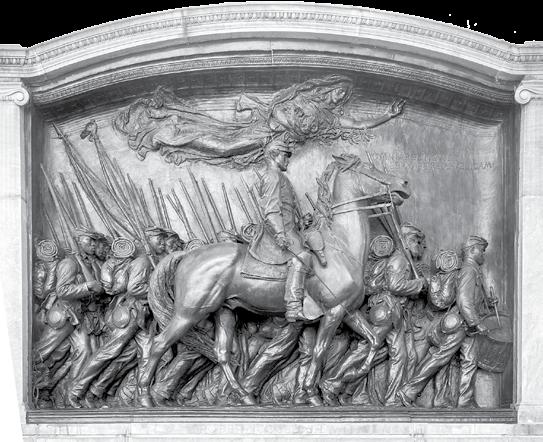
“Very interesting history and a nice walk through a beautiful neighbor hood. But it’s far easier to understand the history and get a better perspective
with a knowledgeable guide to elabo rate on the events that happened here,” reported one visitor.

The Freedom Trail is undoubtedly Boston’s best-known but a growing interest in the issues surrounding slav ery continue to spur the Black Heritage Trail’s popularity. It attracts visitors of all ages and backgrounds but has some special appeal to older visitors who
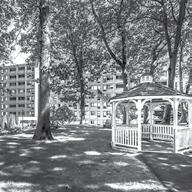
usually find the approximate 1.5-mile route “easily walkable,” according to Quigley.

The trail is known for sharing the “largest collection of historic sites relat ing to life within a free Black community prior to the Civil War.”

If you’ve ever wondered why Bos ton was a leader in the pre-Civil War abolitionist movement, you’ll find some answers via the trail. The trip also helps explain why it became known as part of the Underground Railroad and a sanctuary shelter for escaped enslaved people. Quigley’s own favorite stops are the Hayden home and the 54th regi ment memorial.
One major reason for the city’s prominence was that it was the cap ital and largest city in one of the earli est states to abolish slavery. As a port city, it also was a crucial avenue of es cape. Most of the well-known freedom seekers arrived by sea as stowaways on ships from Southern ports, according to historical accounts.
The approximately 90-minute tour begins across the street from the 54th Regiment Memorial in front of the Mas sachusetts State House. It ends at the Museum of African American History.
“Most sites along the trail remain private residences,” as National Park signs point out. But the final stops at the Abiel Smith School and the African Meeting House are part of the muse um. The tour is free but admission is required at the museum. It is $8 for se niors.
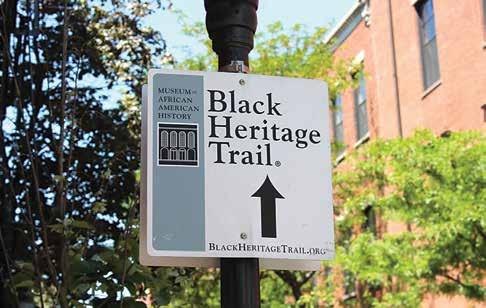
Beacon Hill is one of nine historical districts in Boston. The brick-and-cob blestone-covered neighborhood that was once home to the Underground Railroad was the first of the city’s his toric districts, designated in 1955. Bea con Hill is believed to have acquired its name from a beacon that at one time sat on a hill to warn residents about foreign invasions.
Stops along the trail include homes, schools, churches and other gathering places during those tumultuous times. Many of them have their own designa tions.
A major facet of the 54th Regiment, led by 25-year-old Col. Robert Gould Shaw (played by Matthew Broderick in the movie) was that it was the first appearance of an estimated 200,000 Black soldiers who fought in the war. The statue commemorating the reg
iment by Augustus Saint-Gaudens is regarded as a masterpiece.
Safe house visited by ‘Uncle Tom’s Cabin’ author
Husband and wife Lewis and Har riet Hayden’s home had the distinc tion of being visited by Harriet Beecher Stowe in 1853 as she was working on her famed anti-slavery novel, “Uncle Tom’s Cabin.”
The Abiel Smith School was the first schoolhouse in the nation built for the sole purpose of educating Black students. Another stop, the African Meeting House, was a key center of the spiritual, cultural and political events of the times. It was a church, school, and gathering place for political activ ists who included Frederick Douglass and William Lloyd Garrison.
“It’s the oldest still-standing Af rican-American church, going back to 1806,” said Quigley.
Yet another stop is the George Middleton House. It was built by Mid dleton and Louis Glapion at 5 Pinckney Street and finished in 1787. It is the old est existing home on Beacon Hill. Both owners were known as prominent abolitionists. Middleton’s occupation was a “horse breaker.” Glapion was a hairdresser. Unlikely occupations for heroes…but then again, it also sounds like another script for Hollywood.
years experience providing 24 hour care.
Medical coordination and support services for: - Dementia - Parkinson’sElderly folks with medical needs who can no longer live alone
Available in-house: Physician’s services - Pharmacy services - Podiatry services - VNA Nursing services - Hospice - GeriatricPsych services - Physical Therapy - X-ray - Lab - EKG
Always - TLC with compassion and quality care.
A reverse mortgage gives qualified borrowers the option to receive cash as


lump sum, a monthly check, or a line of credit with NO minimum required
mortgage payments. The homeowner is, of course, required to pay ongoing real estate taxes, insurance and meet other loan guidelines.
not having a monthly mortgage payment, thousands of eligible home owners have utilized a reverse mortgage
• Increase monthly cash flow
off a current mortgage or home equity line
Payoff credit cards
Pay real estate taxes & property insurance
Complete needed home repairs or desired improvements
• Ability to pay for at home care or nursing home expenses

Finalize divorce situations (buyout ex & keep your home)
Pay IRS obligations
Settle legal matters
• Use a reverse to purchase a new home
• Purchase a second home or condo in warmer weather
• Install a new septic system
• Purchase a new or used car
reverse mortgage
• Buy an RV
• Support grandchildren’s educational needs
• Gift to adult children for their home purchase dreams
• Prepay funeral expenses
• Estate & financial planning purposes
• Cash reserves for unforeseen emergency life events
• Estate planning
• Lifestyle improvement options
• Travel
• Home accessibility improvements
• Cash received is all income tax free
• Peace of mind knowing that cash is available
• And the list goes on! What are your needs and desires?
not be the magic wand to solve all the above
but it very well could be the next best thing. Take the first
get informed.
would enjoy the opportunity of having that con
A great place to start is get your free “How to Use Your Home to Stay at Home” 36-page book. This is the official reverse mortgage con sumer booklet approved by the U.S. Depart ment of Housing & Urban Development and published by the National Council on Aging.
receive your free copy, please call me at (781) 724-6221 or email me at av@powhse.com
I am also available to evaluate your specific situation, answer your questions, and calcu late how much money is available to you.
can arrange
can be reached directly at (781) 724-6221 or




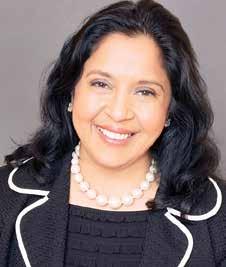

REGION - Wake up in the morning; pour a mug of coffee. Meeting with a friend; grab a couple of lattes. People have been enjoying coffee for centu ries. When America was first colo nized, coffee was introduced here, but tea was the desired drink. Once the Boston Tea Party happened, however, coffee became the more favorable bev erage. Did our forefathers know some thing? What’s the deal about coffee


In 1991, the World Health Organi zation (WHO) determined that coffee might be a possible carcinogen. Fif teen years later, the drink was deemed as not being “associated with an in creased risk of cancer.” In fact, WHO’s International Agency for Research on Cancer published over 1,000 studies showing insufficient evidence to prove that coffee caused cancer. The Ameri can Institute for Cancer Research also concluded that coffee may “reduce the risk for endometrial and liver cancer.”

According to Johns Hopkins Univer sity School of Medicine, of those who consume the beverage, caffeinated or
not, they were about 26% “less like ly to get colorectal cancer.” Another study showed that those with liver disease who drank two or more cups of coffee were less likely to get can cer of the liver. It was also noted that because DNA strands naturally break over time, this can lead to tumors or cancer, but drinking dark roast can lead to less breakage of the strands.
While there are mixed results, studies indicated that caffeine helped to greatly reduce the risk of getting Parkinson’s while also slowing its pro gression. Caffeine was also shown to help better control mobility in those who already have the disease. Drink ing more coffee lowered the chance of developing Alzheimer’s, and drinking a moderate amount, including two to three cups for people aged 65 and up, helped to lower the chance of developing dementia and other types of cog nitive impairment.
Studies have shown that con sumption of coffee could help main tain a healthy liver and prohibit dis ease, while those already suffering from liver disease showed less scar
ring, less stiffness of the liver associ ated with scarring, and a lower risk of death from the disease. Both regular and decaffeinated coffee also help to regulate liver enzyme levels.
While love is good for the heart, love of coffee may be too. In a study of over 21,000 people, more coffee consumption showed a big decrease in the risk for possible heart failure.
A review of 21 studies also showed that drinking three to four cups per day could reduce the risk of stroke, the fourth leading cause of death for women, by 21%. Coffee is also shown to have Vitamin B2 (riboflavin), mag nesium, and potassium, which may also have some heart benefits, not to mention the antioxidants which help protect cells from damage.
Dr. Uma Naidoo is a Har vard-trained nutritional psychiatrist, professional chef, nutritional biologist and author of the national and inter national bestseller “This is Your Brain on Food.” “While you’ll often hear me say,” she said, “ ‘Eat the rainbow!’― it’s another one of my six pillars of nutritional psychiatry, after all―this
“Coffee is rich in polyphenols, which are known to have antiinflammatory, antioxidant activities in the brain and body, with particularly beneficial effects upon our blood vessels and pressure, especially those in the brain,” says Harvard-trained nutritional psychiatrist Dr. Uma Naidoo.
directive also includes coffee!”
“Where a colorful plate makes for a nutrient-dense meal, the fact is that the phytonutrients in plant foods which give them color also confer im mense antioxidant value―and the coffee bean is no exception,” she ex plained. “As a dark-colored bean, cof fee is rich in polyphenols―powerful antioxidants implicated in the brain benefits observed with coffee intake― including a class of compounds called chlorogenic acids. These compounds,” Naidoo added, “are known to have an ti-inflammatory, antioxidant activities in the brain and body, with particu
larly beneficial effects upon our blood vessels and pressure, especially those in the brain.”
The antioxidants in coffee could affect insulin sensitivity, and drinking it often can help process sugar better, lowering the risk of getting type 2 dia betes, with each cup lowering the risk by six percent. Coffee, however, loses its health benefits when creams and sugary substances are added.

Studies showed that coffee could possibly help manage and maintain
weight, supporting gut health and altering fat storage, with more coffee leading to less body fat.
Caffeine in coffee helps to stim ulate the central nervous system, in creasing neurotransmitters that reg ulate energy levels, reducing fatigue. One study showed that coffee before exercising helped with endurance. Another study of 126 older adults showed drinking coffee led to a faster gait and improved physical perfor mance. With one to two cups daily helping partakers achieve the recom mended activity levels, this can lead to better weight management.
Aside from the physical benefits some of the research has shown, there are also studies pointing to coffee as a catalyst to improve mental function. One study showed an improvement in reaction time and mood, as well as a help for better memory. The risk of depression was shown to be lowered by eight percent per cup, and out of over 200,000 people studied, the risk of suicidal death was lowered by the hearty brew.
Despite all the positive benefits, caffeine affects each person differ ently. Too much of the drug, consid ered such because it stimulates the central nervous system and for some people may be addictive, one may ex
perience jitters and anxiety, as well as trouble sleeping. An elevated heart rate and/or increased blood pressure may also be a result that occurs, with each eight-ounce cup packed with about 70 to 140 milligrams in a cup of regular coffee. In that same sized cup of decaf, about seven milligrams of caffeine is present. Aside from that, caffeine can cause dehydration, and for elderly people who often drink less water, this can be an issue.
Some suggestions are to consume less than 400 milligrams of caffeine per day, but everyone is different. It might be a good idea to find out how much caffeine is in each cup con sumed, and some people might ben efit from even less of the substance, opting only for a cup of decaf. Don’t drink the beverage later in the day to avoid disruptions to sleep. Also be careful of the added sugars or satu rated fats that can be added to many popular coffee drinks. These may lead to other health issues. Finally, pregnant women should cut back on caffeine, consulting with their doctor, although it’s a good idea for everyone to check in with a physician for any risks or benefits.
Whether brewing a pot at home or grabbing a mocha cappuccino on the run, know what is in the coffee you consume, and appreciate any perks you might get.

Colony Retirement Home III
housing for seniors. Enjoy nutritious “Home Cooked Meals,” served
our attractive dining room with your neighbors and friends.
All apartments at Colony Retirement Homes receive rental assistance through the HUD section 8 program. Rent is 30% of your adjusted monthly income. Rent includes all utilities except phone and cable TV.
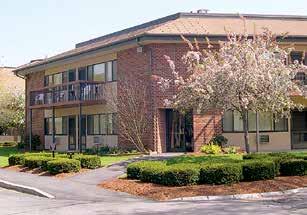
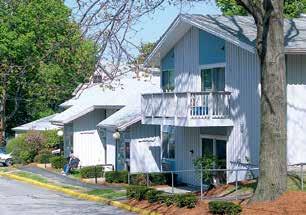
Call Monday thru Friday, 9am to 5 pm for more information.

Colony Retirement Homes I are garden style studio apartments, located in a country-like setting. A short walk takes you to shopping centers, banks, restaurants and the bus line. A little bit of the country adjacent to the city.


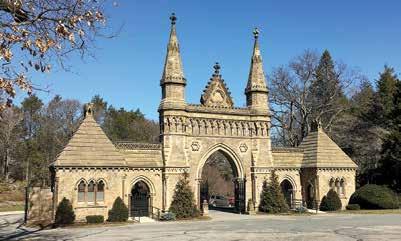 By Peg loPata contriButing Writer
By Peg loPata contriButing Writer


BOSTON - It certainly can’t be denied that the mountains might be the place to go on a fall day trip. But a beauti ful and perhaps closer destination for many is the Forest Hills Cemetery in Boston’s Jamaica Plain neighborhood. This oasis, a garden cemetery, was es tablished in 1848. It not only has fasci nating gravestones, both new and old, it also has a modern sculpture area within its 250-acre park-like setting.
Perhaps the place to begin is with the historical gravesites. There are many notable ones, such as the grave of Dr. General Joseph Warren (17411775), physician, revolutionary leader and military officer during the Amer ican Revolution, and William Lloyd Garrison (1805 – 1879), journalist, publisher and prominent abolitionist.
To honor Union soldiers of the Civil War is the Soldier’s Lot, which includes a statue called “Citizen Sol dier.” In its time this graceful statue
was a remarkable figure. “This statue was one of the few sculptures which commemorated the rank-and-file soldier,” said Janice Stetz, the cemetery’s treasurer.
One can feel the soldier’s mourn ing as he gazes upon the graves of his fallen comrades. No wonder the statue was widely imitated.
“It became a popular prototype for Civil War statues throughout the country,” added Stetz.
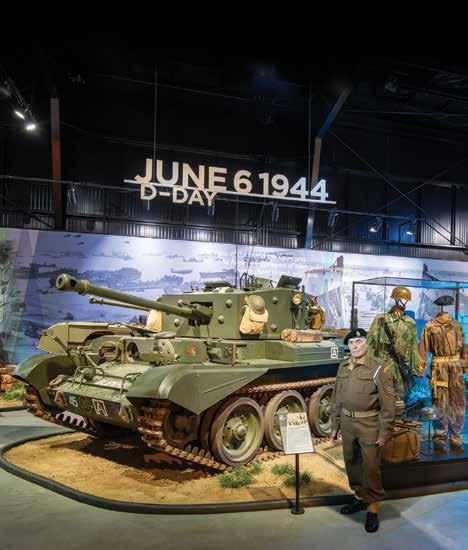


A striking gravesite, funded by
public donations, is the Fireman’s Lot, burying ground for Boston firefight ers still used today. The site includes graves for thirteen firefighters who died in the line of duty and atop its mound towers a nine-foot-high stat ue, dedicated in 1909, of a firefighter. Mounted on its granite base are four beautifully rendered bronze relief tab
lets depicting scenes from a fireman’s life.
From a later era one can find the graves of numerous famous people, such as the poet e.e.cummings, play wright Eugene O’Neill, business lead er Eben Jordan, co-founder of Jordan, Marsh & Co. department stores, and Forest Hills | 13



Like most people, I try to go through my storage on a regular basis to make sure I am only keeping what I need. I struggle with sentimental possessions and alternately feel guilty for keeping some thing and also for throwing things away. It is a lose/lose proposition. No wonder people avoid sorting through their treasures! I be lieve many of us don’t even feel like we have permission to enjoy looking at our stuff because it is so rife with guilt and other negative emotions.
This realization made me start paying more attention to what I was feeling during this process. And I be
lieve doing so has helped me under stand myself better. I am sharing my thoughts here because I believe that an honest review of emotional attach ment may help some people like it helped me.
I pulled a tote out of our storage space with the intent of donating any thing that we did not use. I did not struggle to determine the best next step with most of the items in this tote—donate, donate, keep, donate, keep. Most of the decisions were clear. And then I came across the tin that holds my extra buttons.
This tin came from my mother’s house. I remember distinctly the green drawers in the basement where she kept all her sewing things—thread, scissors, and other sundries. When we cleaned out my mother’s house, there
Celtics former captain Reggie Lewis.
Cemeteries have always included funerary sculptures: angels, religious figures, decorative religious symbols and so on. Early on, the Forest Hills Cemetery became widely acclaimed for its Victorian-era sculptures. That tradition continues. In 2001, the Con temporary Sculpture Path, composed of a small permanent collection and works on loan was established.
“We are simply continuing the legacy of placing impressive sculpture in a peaceful, thoughtful setting,” said Stetz.
One sculpture of note, “The Senti nel,” of Harriet Tubman, was made by Fern Cunningham in 2003.
Another sculpture that makes one reflect on mortality is “The Boy in the Boat,” a white marble statue encased in glass memorializing a four-year-old who died in 1886 of diseases not un common in his time.
“Death Stays the Hand of the Sculptor” is by sculptor Daniel Chester French, best known for Washington, D.C.’s Lincoln Memorial and closer by, on the Harvard University campus, the statue of John Harvard, the first ma
jor benefactor of the university. The sculpture memorializes sculptors and brothers Martin and Joseph Milmore. Some of Martin’s monuments can be seen on the Boston Common.
This cemetery is an open-air art museum of fascinating gravestones, monuments, sculptures and archi tecture. But it has also been called an arboretum cemetery. There are huge native and exotic trees. The variety includes mature oaks, cherry trees, sugar and Japanese maples, umbrella pines, weeping hemlocks and giant rhododendrons.
The terrain ranges from sloping low hills to rocky landscapes; from ar eas of natural woodland to formal Vic torian flowerbeds. There’s even a lake. With the colors of fall, this cemetery will be worth any leaf-peeper’s stop. But it also offers something to explore for the historian and anyone who ap preciates art and architecture.
Learn about the cemetery and up coming events: https://www.foresthi llscemetery.com/.
Want the armchair tour? Take a self-guided tour of some highlights of the cemetery: https://www.forest hillscemetery.com/self-guided-schol ars-tour/.
were a few different tins with buttons, sorted by color category. I have not done enough sewing in my life to jus tify so many tins, so when I cleared out this dresser, I chose one tin and mixed the buttons I thought I might need to gether.
The thing is, after four years I have never needed any of the buttons. I think it is time to donate them. But the tin is harder for me to get rid of. I have been thinking about why and I think it is because it has a unique and dis tinct smell. It is an old pipe tobacco tin and retains some of that earthy smell, combined with the metallic smell of the container itself.
I have to admit, I was curious about my attachment to this smell. I do not remember anyone in my fam ily smoking loose tobacco. I opened
the container over and over again and tried to pin down what I was feeling. I believe I was smelling home, but not home as in comfort and family, more the sadness and longing of a home that no longer exists.
Then I thought, why do I want to hold onto these emotions? I am not holding onto my mom or even mem ories specifically of her. The memories are more place-based. I decided I can let that go. I do not need to hold the tin to remember my home. I decided I can donate the tin because I finally under stand what I am feeling and why.
I encourage anyone who is de cluttering to think about the feelings evoked from items you are holding onto. Based on my experiences, you may be surprised why something is pulling on your heartstrings and whether or not it is something you need to remember at all. Sometimes, it is not what you hold but what you feel that is more important.
Marianne Delorey, Ph.D. is the Ex ecutive Director of Colony Retirement Homes. She can be reached at 508-755-0444 or mdelorey@ colonyretirement.com and www. colonyretirementhomes.com.

Are you healthy and vaccinated, mentally active, and over the age of 65?
The Aging and Cognition Lab is looking for subjects!
The experiment explores effects of aging on cognition. Noninvasive and no medication involved.
• 2-hour time commitment
• First session pays $45 + travel expenses
Call (617) 495-3856 Department of Psychology
The past is a candle at great distance: too close to let you quit, too far to comfort you.
Amy Bloom
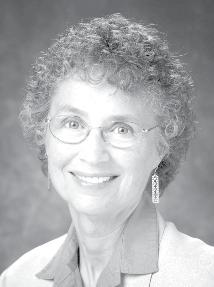
fidence. They create beautiful paintings and drawings expressing one idea after another.
Illustration by Janice LindsayA
n artist friend gave me a card that says, “We are all artists even if we don’t know how to draw.” The quote is from an 8-year-old, who apparently discovered his inner artist several de cades earlier in his life than I went look ing for mine.
I’m a writer. My natural palette holds words, not paints. I love words. But they’re so black and white. Each letter has an un changeable shape. To make sense, words must march together in order ly fashion. And, as much as I hate to admit this, words can’t express every thought that begs to be expressed.
I envied my artist friends who work in colors and shapes with joy and con
A few years ago, I acknowledged that something inside me was burst ing to be expressed, not in words but in forms and hues. My fingers longed to stop tapping on keyboards for a while and to play with color and shapes on paper.
I can’t draw. (Artists might tell you that anybody can draw, but they’re just being polite.) I don’t know composition or color theory or other arty subjects I never heard of.
But one day I happened upon a coloring book of mandalas made for grownups. The book said, “You really need me. Now.” Coloring. I could do that.
I hadn’t thought much about man dalas, but I learned that traditional mandalas are a guide to contemplation and meditation. Most often associated with Eastern religions, they appear in other faiths as well, for example, the famous rose window in the cathedral

at Chartres. They’re circular, represent ing the universe, and usually contain repeating patterns that draw someone into thought, both in making the man dala and in viewing it.
So I happily set about coloring. But I unhappily grew bored following someone else’s designs. I began to decorate them with tiny circles, zigzags, di amonds, and swirls, to make them more interesting for my brain and fingers.
Then it occurred to me: Do I have to follow somebody else’s designs? Could I create my own?
Maybe I can’t draw, but I know how to use a compass and a ruler. And sten cils! I can trace shapes as well as any body. My husband, before he became an engineer, had been a draftsman. He still had his templates of interesting shapes. He gave them to me. I was on my way.
I’ve made about a hundred manda las. Most are in color, a few in black and white. Some turn out pretty well, some are duds, like the orange monstrosity I titled “Oops.”
Two mandalas celebrate the birth
of my two granddaughters. One was inspired by button collections from my mother and grandmother. One has ele phants I traced from a picture in a dic tionary. One is designed around half of a small broken chip clip, used as a template. One is made entirely with the shapes of Christmas candies. Mandalas might encourage a search for meaning, but meaning doesn’t always have to be serious.
Would a discerning artistic eye consider my mandalas to be art? Does it matter?
Inside each of us, something per sonal is bursting to be expressed. We should pay attention, let ourselves be drawn to those forms of expression that speak to us. Why does someone choose to paint, or play the ukulele, or cook gourmet meals, or create a family scrap book?
And does a person choose her form of expression? Or does the form choose the person, as the mandalas seemed to choose me? Who knows? Does it matter?
Contact jlindsay@tidewater.net



REGION - Having some money set aside may provide a sense of security, but many people often feel insecure when it comes to how to actually save that money. Interest rates rise and fall, and the economy can ebb and flow like the ocean’s tides.
The Federal Reserve, or Fed, which is the United States’ most significant central banking system, raised interest rates from 1.5% to 1.75% in June, which was the largest rate increase since 1994. This economic institution manages and maintains the U.S. money supply and financial transaction system, while setting up monetary policies and over seeing bank operations. They also help maintain financial markets. What a bank charges another bank for an over night loan is called the Federal Funds Rate, and if this goes up, other interest rates will also follow suit shortly after.
When interest rates go up, this means an increase in credit cards, ad justable-rate mortgages, home equity loans, and other interest-bearing costs.
Occasionally, when the Federal Re serve rate goes up, some banks might not raise the yield on savings accounts, or if they do, it might be a small in crease.
When it becomes too expensive to obtain a loan due to a higher inter est rate, people spend less money on those big-ticket items like cars or home improvements. Spending less money leads to the economy slowing down, which can hurt company growth and stock prices.
With a higher interest rate, peo ple end up paying more for their car, home and items purchased on a credit card. Often, home prices drop due to the decline in demand that comes with increased interest rates, so if a senior is looking to sell their house and reap the benefits of a big profit, it would proba bly be better to wait.
Many seniors live off their savings, and if their cache is earning more in terest, that’s a plus. Having money in a savings account that is FDIC insured is considered a safer way to earn a little more interest. The higher interest rates also mean that savings accounts, mon ey market funds and CDs will all yield higher amounts.
When interest rates increase, this could bring in more foreign invest ments, causing the U.S. dollar to become stronger. With a lower interest rate, the rate of return goes down over time. This means having to put aside more from a paycheck to reach that retirement goal.
“There is an upside to inflation, especially for those who use savings accounts and CDs,” said Susan Moore, chief financial planning officer at Moore Financial Advisors in Watertown. “On line savings banks such as Ally Bank or Synchrony Bank are paying much more than they paid on savings a few months ago. Rates have gone from 0.5 percent a few months ago to 1.5 to 1.75 percent. Also, retirees are likely to see another sizable increase in their Cost-of-Living Adjustment (COLA) for their Social Se curity payments in 2023.”
“Based on research conducted by the Senior Citizens League, an advoca cy group for retired individuals, a Social Security COLA adjustment for 2023 of 10.5% is possible, which would add an extra $175 per month to the average benefit,” Moore explained. “The last time Social Security benefits rose by 10 percent or more was in 1981. This is generally good news. But for retirees with higher incomes, there are some things to be aware of when income is expected to rise in the coming year,” she noted. “The boost might result in having to pay more in Medicare premi ums and for prescription drug coverage due to the Income-Related Monthly Adjustment Amount (IRMAA).”
Be sure to talk to a financial plan ner or look for a retirement calculator to see how any investments dependent on interest rates are affecting your spe cific investment plan. Higher rates may make it easier to achieve your goals. But when rates are lower, waiting too long could make it more difficult to recover from any losses suffered. If possible, if you’re still trying to build your retire ment savings, consider contributing more each year to help reach that sav ings goal.
Social Security payments in 2023 will likely have a sizable increase due to higher interest rates.
Susan Moore














REGION - The next time you get your mashed potatoes with homemade gravy or the “Blue Plate Special” with lima beans made by the cook in the kitchen at your favorite diner, light up a five-cent cigar to celebrate Philip H. Duprey and Grenville Stoddard but add a few puffs for John Francis Hick ey Jr. as well.
The five-cent cigar is gone today but it was around when Duprey and Stoddard in Worcester were building a pioneering company that shipped diners all over the Eastern Seaboard.
Hickey’s famous lunch wagon was a highly prominent and influen tial early American diner in Taunton, where the slogan for 40 years was “nothing could be finer than to eat in Hickey’s diner.” He was among the fig ures who made Taunton at one time be termed the ”Lunch Wagon City.” Hickey’s used to sit by the town green, or on Court Street, depending on the time of day, feeding hundreds of hun
The Rosebud in Somerville is a classic Worcester Lunch Car Company diner from 1941 that has adapted to the changing times and now includes a wide-ranging food menu and a full bar.

gry people each day. At one point, you could even buy a Hickey’s lunch wag on t-shirt.
After Hickey retired in 1986, the diner was purchased by the city and re stored by students at Bristol-Plymouth Regional Technical School, with the goal of bringing it back out for special
events, like Taunton’s Christmas pa rade.
It’s from that point that the story of Hickey’s lunch wagon takes sever al twists, a sad turn involving a diner museum that never came to be, and ultimately carted off into mystery (so where it went was never determined

but it’s no longer serving comfort food).
At one point, Taunton had four lunch wagons, one on each corner of the town green.
The diners were owned by James H. Smith, Arthur T. Brady, Andrew J. Galligan, Timothy F. Mahoney, and Michael J. Behan, according to “Nothing Could Be Finer Than to Eat At Hickey’s Diner,” a 1992 AP English essay written by Hickey descendant Kelsey Koehler. A 19th-century city or dinance allowed these lunch wagons to operate from 4 p.m. until 2 a.m.
Some of them were still horsedrawn as late as 1938.
John Francis Hickey Jr. was born March 4, 1916. He was a 1936 graduate of the Wentworth Institute of Tech nology, where he trained as an archi tectural draftsman.
After graduation, he had trouble finding work, but eventually, in 1942, he started working as a counterman at Galligan’s, one of the night lunch wagons.


Two years later, he decided to go into business for himself, buying his own diner in 1944. It was an eightstool unit, mounted on a 1938 white truck.




The Worcester Lunch Car Compa ny was, of course, a Worcester-based manufacturer, which operated from 1906 to 1957. During its time, the company produced 651 diners. It was started by Philip H. Duprey and Gren ville Stoddard, and they shipped din ers all over the Eastern Seaboard. All of its assets were dissolved in 1961.
The diner’s concept in America can be traced to a crude precursor created in 1872 by Walter Scott, who sold food
out of a horse-pulled wagon to night employees of the Providence Journal newspaper, in Providence, Rhode Island when restaurants were closed. Scott’s diner can be considered the first diner with walk-up service, as it had windows on each side of the wagon.
Mike Urban, author of “The New England Diner Cookbook: Classic and Creative Recipes From the Finest Roadside Eateries,” provides a re alistic portrait of their current state, including healthier recipes emerging from places once known as greasy
spoons. He spent two years writing it. “I didn’t feel I was doing a culinary history book as much as just trying to capture this stuff as it’s happening and evolving,” he said.
Urban admitted in interviews that diners are a bit of an endangered species. But television programs such as Guy Fieri’s “Diners, Drive-Ins and Dives” have helped save many of them.
Diners have long been regarded as an “endangered species.” There have often been predictions of their imminent demise. But they carry on and have survived the worst of the pandemic. When carry-out orders were so popular, they were seen as the industry “saviors.”
What exactly is a diner? Defini tions vary but the Visiting New En gland website put it this way:
“Diners are best known for their history, tradition, an extensive menu selection, large portions of comfort foods at fair prices, quick service, oak and mahogany booths, counter with stools, jukeboxes, a stainless-steel exterior, and plenty of neon.” It add ed that “Not all diners possess all of those elements.”
Clearly, many factors create a true diner but in a nutshell, “diner” is a derivative of “dining car” and “din er designs reflected the styling that manufacturers borrowed from rail
road dining cars,” according to the Rhode Island-based American Diner Museum website.
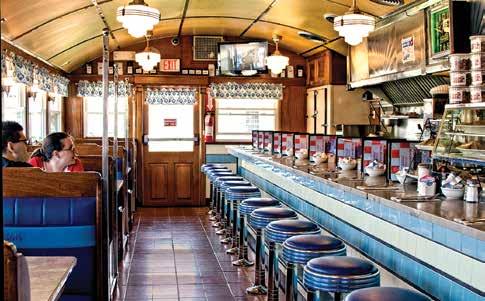
Diners almost always feature a counter, stools and a food prepara tion or service area along the back wall, states the American Diner Mu seum, which by the way, “consider(s) every diner to be a living museum.”
At their most basic, diners offer what is known as “comfort food.” These are hearty dishes which pro mote a feeling of satisfaction and are often associated with childhood or home cooking. Think meatloaf, mac and cheese, corned beef hash and eggs, and pancakes with butter and maple syrup.
If you don’t believe diners have symbolized America, look at what the movies have done with them. Hollywood has romanticized the American diner in films such as “Din er” “and “Grease.” And in television shows like “Seinfeld.”
Closer to home here, artists have been part of the wave. One exam ple: Norman Rockwell’s famed 1948 painting “The Runaway,” which por trayed a young boy and a caring high way patrolman. You can guess where they met. They were sitting at the counter of Joe’s Diner in Lee.
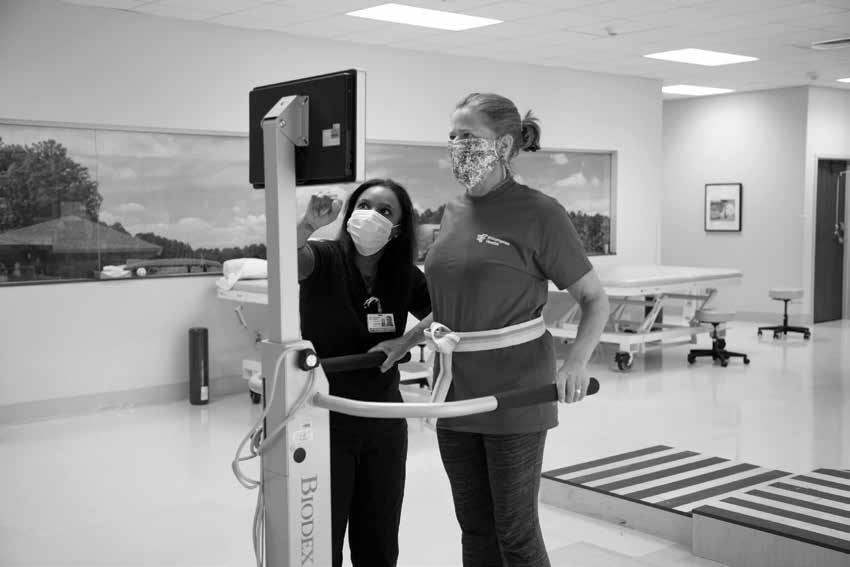

First step. First word. First hug. First dance. Every first matters, and each milestone is worth celebrating, which is why we are proud to Go Red for Women. Find your first with us for a better stroke recovery.
more at ehc.rehab/fwn21

REGION
Back pain for older people
unusual. But managing it can be difficult because it’s often charac terized medically as “non-specific.”
that it may be the result of several conditions, according to medi cal doctors.
here are some suggestions for preventing it, treating it and other tips to help you understand it.
First of all, it’s far from unusual. It’s one of the most common complaints for older people when visiting their family physicians, said Dr. Mina Safain, assis tant professor of neurosurgery and at tending neurosurgeon at Tufts Medical Center/Melrose/Wakefield Hospital.
“The best therapy is actually pre ventative,” he said. That means “main taining a good and healthy weight. And concentrating on core strengthening exercises, which means focusing on good abdominal and lower back mus cle strength,” he said.
Working with a physical therapist or exercise trainers in a workout setting can be very useful to get started with a later home-based exercise program.
“Regular exercise three or four times a week is a good practice. Clear your exercise regimen with your prima ry care doctor,” Safain recommended.

Walking has also proven to be good for back health.
“Aiming at 10,000 steps a day is of ten seen as a good goal but you should consult with your physician,” he said.
A valuable substitute for individ uals who have difficulties for conven tional workouts: aerobic exercises.
Massachusetts General Hospital
also has a variety of tips for preventing back pain that, not surprisingly, include the already mentioned maintaining a healthy weight and regular exercise.
They also suggest not smoking and finding ways to reduce stress, which may cause muscle tension.
If you’re prone to back pain, con sider vegetables, urge some experts. Try an anti-inflammatory diet of most ly plant-based foods, especially eaten in combination with omega-3-rich cold-water fish like salmon and sar dines, black cod and tuna.
The diet could help avoid inflam mation. “Deeply colored fruits and vegetables are a key part of an anti-in flammatory diet,” said Dana Greene, MS, RD, LDN, a nutritionist in Brook line. If you’re looking for foods that reduce back pain and are loaded with nutrition, she suggested trying carrots, beets, sweet potatoes, cherries, berries, grapes and red wine, pomegranate, and watermelon. Herbs and spices, includ ing basil, cinnamon, ginger, rosemary, garlic, curcumin, onions, oregano, and turmeric tend to be especially rich in anti-inflammatory agents, so she sug gested seasoning generously. Also, drink healthy herb teas and true teas
(green, oolong, and white), according to Greene.
Other good food choices for an an ti-pain diet: avocados; nuts (walnuts, almonds, pecans, and Brazil nuts); lean proteins, such as chicken and turkey; beans; and cocoa.
Another tip from Dr. Jason Yong, an anesthesiologist and medical direc tor of the Pain Management Center at Brigham and Women’s Faulkner Hos pital, is that not all back pain requires treatment from a physician.
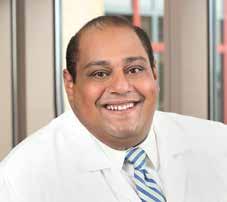
“Patients with acute low back pain (lasting less than three weeks), for ex ample, can often get sufficient relief by using over-the-counter anti-inflamma tory pain medications, physical therapy exercises, and temporary restrictions on lifting while the body heals itself,” he said on the hospital website.
Generally, treatment by a physi cian is advised when pain is limiting a patient’s ability to walk, sit, or stand for prolonged periods of time, or if pain is greater than a 6 (on a scale from 0 to 10), he said. Spinal surgery is usually considered for patients with intense, unrelenting pain (10 on a scale from 0 to 10), weakness, incontinence, or structural instability.
Estate planning may seem overwhelming matter of getting your affairs in order. Of alike. Some individuals may only require may benefit from establishing trusts. The protect your interests, and provide for qualified elder law & estate

Partners, Dan Surprenant & Michelle Attorneys by the National Elder Law team uniquely qualified to help you and provide you with
planning
overwhelming
of getting your affairs in order.
Some individuals
from establishing
daunting,
really a
course, no two estate plans
seem overwhelming and daunting, but it’s really a matter of getting your affairs in order. Of course, no two estate plans are alike. Some individuals may only require a will-based plan, while others
only require a will-based plan, while others
best way
plan for your future,
benefit from establishing trusts. The best way to plan for your future,
your interests,
provide for your loved ones
to consult a
your interests, and provide for your loved ones is to consult a qualified elder law & estate planning attorney.
elder law & estate planning attorney.
Dan Surprenant & Michelle Beneski, are Certified Elder Law

Dan Surprenant & Michelle Beneski, are Certified Elder Law Attorneys by the National Elder Law Foundation. This makes our team
by the National Elder Law Foundation. This makes our


qualified to help you prepare for life’s unknowns
qualified to help you prepare for life’s unknowns
provide you with peace of mind.
provide you with peace of mind.
The best therapy is actually preventative,” says Dr. Mina Safain, assistant professor of neurosurgery and attending neurosurgeon at Tufts Medical Center/Melrose/Wakefield Hospital.
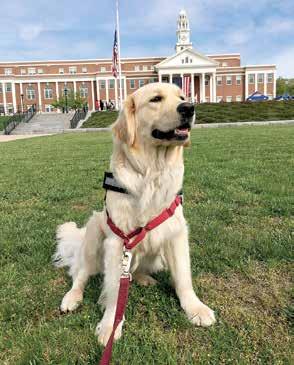 By DeBBie sPingarn contriButing Writer
By DeBBie sPingarn contriButing Writer




NORWOOD - Tom Smith of Norwood, whose wife Judi required 24-hour, seven-days-a-week home care due to ALS, described his experience find ing caregivers who would come into his home as “incredibly difficult.” His wife had a service dog, Harley, a gold en retriever trained by GOFI (Golden Opportunities for Independence) of Walpole. Smith said that most agen cies would inquire about a dog in the home and asked that the animal be locked up or restrained. However, as Smith explained, as soon as an ALS pa tient receives a tracheotomy they can not be left alone. Due to the caregivers’ restrictions with animals, Smith said, “I had to do most of it myself.”
“As you can imagine, I was in a panic,” Smith said. “My wife was on a brand-new device where she need ed to breathe, and we were given dire warnings to have the device checked within three days and she (the respira tory therapist) just walked out.” Smith later found a local person who cared for his wife for 18 months. Judi passed away at the young age of 57.
According to executive director Jake Krilovich of the Home Alliance of Massachusetts, a group of 180 home care agencies in the Bay State, most agencies try to screen their home care workers and find workers who are comfortable with dogs. However, this is not always possible and contributes to an even greater shortage of home care workers. An informal poll of about 10 to 15 agencies stated that dog bites were frequent and for this and other reasons, workers may refuse to work in a home where dogs are pres ent. Many home care workers are from cultures around the world where dogs are not viewed as family members.
Nancy Capone, 58, also of Nor
wood, had major spine surgery in early July and found the caregiver as signed to her home was afraid of her three dogs, a mini-Australian Shep herd, Siberian husky and Labrador

retriever. “She was request ing never to come back here again,” Capone said. “If a per son has a dog, they shouldn’t be ashamed of having it, and having to put it away,” she added. “The dogs had to be locked in a separate room. My blood pressure went through the roof,” Capone added.
Though the visiting nurse agency Nancy used was told of her pets, she still encoun tered a therapist “who was petrified of dogs.”


The Massachusetts Dept of Health regulates training certification for home health aides, CNAs (Certified Nurs ing Assistants) and nursing students. CNAs must have a minimum of 75 hours of train ing and pass a state exam. Training on understanding the dog’s role as companion and support to the patient is not part of required aide education. Training can be as little as three weeks to as much as 48 weeks. Caregivers enter
ing a home may not be equipped or trained to understand a dog’s behavior, role within the family, or capacity to provide companionship, love and healing to the patient in need.
The MSPCA in Boston offers infor mation on dog bite prevention. This includes ways for families to introduce their dogs to newcomers to the home. The article, provided by Communi cations and Outreach Manager of the Massachusetts Executive Office of El der Affair Eleanor Romano, states that “It is never safe to approach a strange dog especially when tied in a yard or behind a fence. Always assume that a dog who doesn’t know you may see you as an intruder or a threat.”
Training programs vary. If you have a dog and are concerned about obtaining home health care, be sure to discuss it with it any home health care agency you are considering. For more information on caregiver train ing, contact Kayla Rosario-Munoz at the Massachusetts Executive Office of Health and Human Services at 857248-1104 or Eleanor Romano, Com munications and Outreach Manager, at the Massachusetts Executive Office of Elder Affairs at eleanor.romano@ state.ma.us.

